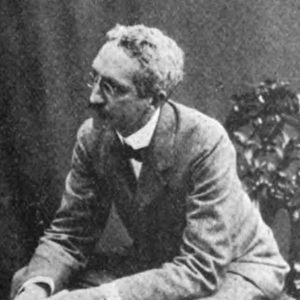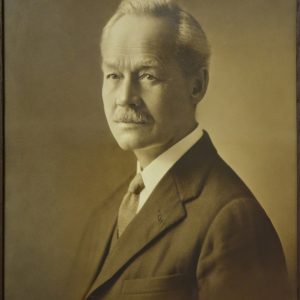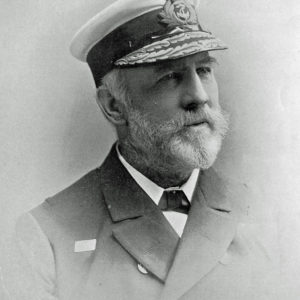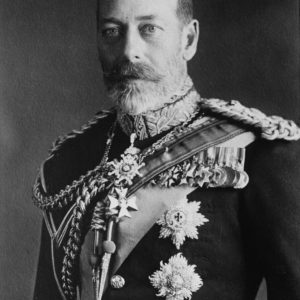I was working on ideas for Little Bay heritage signs when a rather obvious idea struck me. What better way to demonstrate the town’s significance to Newfoundland history than by presenting some of its most prominent 19th century visitors.
Little Bay, Newfoundland saw many fancy visitors many of which stayed at the Little Bay Hotel.
I’ve included pictures for the ones I think present the best options and only brief lines for others but these can all easily be expanded upon. There are also others of local prominance which could be included such as Rev. Lumsden and James Howley.
 Gustav Kobbe (1857-1918)
Gustav Kobbe (1857-1918)
Gustav Kobbe was a German-American music critic, author, and editor. Today Kobbe is known for his writings on Opera.
Gustav Kobbe’s legacy continues to inspire musicians and music lovers around the world and his contributions to the field of music criticism are still recognized and appreciated today.
He visited Little Bay in 1894. How much he valued the experience can perhaps be judged by the fact that afterward he could be found traveling the globe in the company of a Newfoundland dog.
Kobbe was accompanied by the American artist Milton James Burns.
Simeon Parsons (1844-1908)
Simeon Parsons was a pioneering Newfoundland photographer. Born in Harbour Grace, Newfoundland, Parsons began his career as a photography assistant and went on to establish his own studio in St. John’s in the 1870s.
Parsons was known for his skilled and artistic photography, capturing images of Newfoundland’s landscapes, seascapes, and people.
Simeon Parsons’ legacy as a photographer continues to be remembered and celebrated in Newfoundland. His images offer a glimpse into the history and culture of the island and serve as a testament to his exceptional talent and vision.
He visited Little Bay in 1884.
Robert Edward Holloway (1850-1904)
Robert Edward Holloway was a prominent Newfoundland photographer. Born in St. John’s, Newfoundland, Holloway was known for his exceptional skills and artistic vision as a photographer.
Holloway’s photographs captured the beauty and majesty of Newfoundland’s landscapes and seascapes, as well as the unique character and spirit of its people.
He visited Little Bay in 1900.
 Lurana W. Sheldon (1862-1945)
Lurana W. Sheldon (1862-1945)
Lurana W. Sheldon was a pioneering American journalist, author, and women’s rights activist. She was born in Michigan and went on to have a successful career as a writer and editor.
Sheldon was a prominent voice for women’s rights, advocating for women’s suffrage and equal opportunities in education and the workplace. She was a member of the National American Women’s Suffrage Association and wrote articles on the importance of women’s suffrage in various publications.
Lurana W. Sheldon was a trailblazer for women in journalism and activism and her legacy continues to inspire future generations of women to fight for their rights and take a stand for what they believe in.
She visited Little Bay in 1890.
 David Thomas Dobbin (1817-1900)
David Thomas Dobbin (1817-1900)
Dobbin the Diver was Little Bay’s most famous resident. He was a legendary figure in seafaring history known for his incredible diving skills and bravery.
Dobbin was said to be fearless in the face of danger and able to dive to great depths to retrieve valuable treasures from the depths of the sea. He was renowned for his ability to locate and bring up sunken shipwrecks, often in treacherous waters and against seemingly insurmountable odds.
He worked for several years as a miner at Little Bay’s mine before leaving the area to spend his last years in St. John’s.
 Wilfred Thomason Grenfell (1865-1940)
Wilfred Thomason Grenfell (1865-1940)
Dr. Wilfred Thomason Grenfell was a British medical doctor and humanitarian who devoted his life to improving the health and well-being of the people of Newfoundland and Labrador. Grenfell was a medical missionary who traveled to Newfoundland in 1892 to provide medical care and assistance to the fishing communities along the northern coast of the island.
Over the course of several decades, Grenfell established a network of hospitals, schools, and other institutions throughout Newfoundland and Labrador, providing essential health care and education services to the people of the region. He was a tireless advocate for the welfare of the people he served, and was known for his compassion, dedication, and commitment to improving their lives.
Grenfell’s legacy continues to be celebrated in Newfoundland and Labrador, where he is remembered as a pioneering medical doctor and humanitarian. His work had a profound impact on the health and well-being of the people of the region and his legacy continues to inspire those who seek to make a difference in the world.
He visited Little Bay in 1912 and again in 1921 on his hospital ship. His hospital ship the Maraval was later renamed the Notre Dame. It was under that name while delivering fuel to the community that it tragically exploded off the wharf in Little Bay in 1978 claiming two lives and injuring others.
 William Robert Kennedy (1838-1919)
William Robert Kennedy (1838-1919)
Admiral Sir William Robert Kennedy was a British Royal Navy Officer who oversaw the British fleet off the coast of Newfoundland from his flag ship the HMS Druid. He was the senior officer covering the coast of Newfoundland from 1878 until 1891. It was in this capacity that he visited Little Bay in 1881 after the town had suffered a fire. He and his men assisted in rebuilding the community.
Henry Arthur Blake (1840-1918)
Governor Henry Arthur Blake was a British colonial administrator and politician who served as the governor of Newfoundland from 1887 to 1888.
He visited Little Bay in 1888.
Terence O’Brien (1830-1903)
Governor Terence O’Brien was a British colonial administrator and politician who served as the governor of Newfoundland from 1889 to 1895.
He visited Little Bay in 1891
John Hawley Glover (1829-1885)
Governor John Hawley Glover was a British colonial administrator and politician who served as the governor of Newfoundland from 1875 to 1881.
He visited Little Bay in 1878.
 King George V (1865-1936)
King George V (1865-1936)
King George V was the King of the United Kingdom and the British Dominions, and Emperor of India, from 1910 until his death in 1936.
He was present in Little Bay’s harbour on board the HMS Canada in 1883. He would later be presented with the final copper from Little Bay’s mine in the form of a heraldic shield during his tour of Newfoundland in 1902.
I’d like to say thank you to everyone for supporting this project. I’ve published an ebook of my blog posts on the town’s religious denominations. Please purchase a copy if you’d care to support this continuing project you can find it here.
